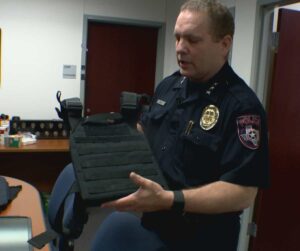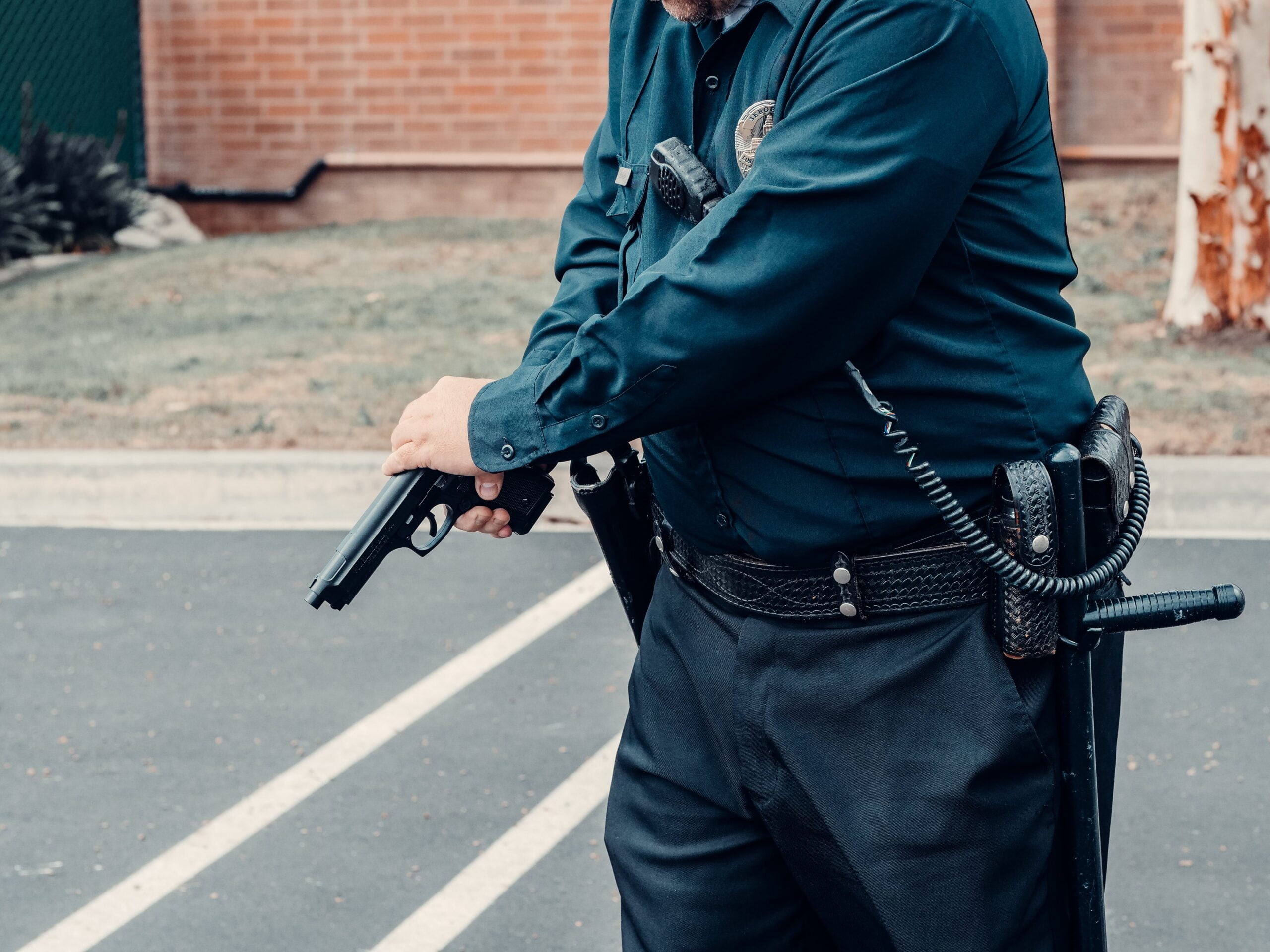What is a Ballistic Vest?
Fundamentally, a ballistic vest is crafted to deliver protection against a spectrum of potential threats, customizing its defense mechanisms to counter projectiles, stabs, and firearm attacks. Comprising two integral parts – the textile cover and layers of ballistic material inside the cover – the outer layer encapsulates the layers responsible for actual protection.
Types of Ballistic Vests
Covert Vests
Covert vests, concealed beneath the uniform, find extensive use among police and security officers, prioritizing discretion and discreet protection. Characterized by a thin and lightweight design, they enhance flexibility, mobility, and wearer comfort. Construction often involves moisture-absorbing materials for breathability, with anatomical shaping ensuring a snug fit.
Overt Vests
Overt vests, openly worn by police, security, military, and special forces personnel, offer functionality with the ability to attach police equipment. Military and special forces personnel utilize overt vests with larger protective surfaces, often upgradable by attaching ballistic panels to critical areas. These vests are typically heavier and more rigid, constructed with flame-retardant materials.
Plate Carriers
Plate carriers, used by military and special forces, have a smaller protective surface area than overt vests. Unique features include the option to replace soft ballistics with standalone panels, reducing weight and enhancing user mobility. Modularity and multifunctionality define plate carriers, enabling users to customize gear for specific missions. Adjustable straps and cummerbunds contribute to a secure fit and freedom of movement.

Soft Ballistics vs. Hard Ballistics
Soft ballistics, crafted from high-strength, elastic textiles like para-aramid and polyethylene, effectively halt various ammunition types. These materials offer protection against stabs, impacts, and other potential threats. Soft ballistics can be standalone or used in conjunction with hard ballistics for enhanced protection.
Hard ballistics, designed to protect against rifle fire, are panels made from composite materials like ceramics, steel, or high-density plastics. The combination of hard and soft ballistics creates a robust defense system, ensuring comprehensive protection.

What Makes a Good Ballistic Vest?
A high-quality ballistic vest exceeds the basic requirement of reliable protection. It should fully meet user requirements and the respective protection class while offering an additional margin of safety. Comfort criteria, including weight, cut, and freedom of movement, are crucial considerations. Assessing the overall quality includes factors like vest shape, finding a balance between protection and comfort.
The duration a protective vest can be worn depends on various factors, including weather conditions, the wearer’s physical condition, attitude toward vests, and acclimatization. Expect some impairment of movement based on the protection class, construction type, and vest cut. However, thoughtful design, optimized cut, and technically advanced ballistic materials can mitigate these effects.
How Much Does a Ballistic Vest Weigh?
The weight varies significantly based on size, design, and protection requirements. Standard medium-sized police vests typically weigh 2-3 kg, aligning with protection level 1. Military and special forces vests, designed for rifle fire, can weigh as much as 15 kg. Consider additional equipment impact on overall load for vest-wearing officers or soldiers.
Upgrades for Ballistic Vests
Ballistic vests are designed with upgradeability, allowing users to enhance protective capabilities based on evolving threats. Upgrades may involve replacing covers, incorporating carrying bags, adding stab-and-impact protection elements, or introducing additional protectors. Each upgrade element elevates the vest to a higher protection class, ensuring adaptability in dynamic operational environments.
Trauma Packs
Trauma reduction packs play a vital role in reducing blunt trauma and associated injuries, consisting of materials like composite panels, plastic sheeting, or metal. Partial shock absorbers, designed for cardiac and spinal areas, can be utilized with concealed-worn vests. For open-worn vests, additional protectors are available for the neck, shoulder, upper arm, thigh, and groin. Some overt vests allow inserts for upgrading to higher protection classes.
Stab-and-Impact Protection
Effective protection against stabbing weapons, blows, and impacts is essential. Various stab-protection inserts, such as specially treated steel-track armor or laminated aramid fabric, offer flexibility and guard against spikes, needles, and other pointed-tip items used as weapons.
What Protection is Provided by Ballistic Vests?
The level of protection offered by a ballistic vest is indicated by its protection-level rating, determined according to universally recognized standards. Prominent standards include the U.S. standards NIJ 0101.04, 0101.06, and 0101.07, the British standard CAST, the European standard VPAM, and the German Police Technical Guideline for Protective Vests (SK). These standards encompass well-established testing requirements that consider factors such as trauma and ammunition types, providing a comprehensive evaluation of a vest’s protective capabilities.
Care And Maintenance of a Ballistic Vest
Ballistic vests are designed for durability, capable of withstanding tough conditions. Regular examination for tears, cuts, and damage is essential, with assessments ideally conducted after each use. Beyond physical damage, vests are sensitive to environmental factors such as moisture, sweat, heat, and UV radiation. To mitigate these effects, ballistic panels are sealed in waterproof, UV-resistant sleeves. Consequently, ballistic panels should not be laundered in conventional washing machines and dryers. The cover, however, can be machine washed, provided it is separated from the panel. Handwashing is an alternative, contributing to the cover’s longevity. More details about care and maintenance of your vest can be found here.
Evolution of Materials Used in Ballistic Vests
The materials used in ballistic vests have undergone a transformative journey, transitioning from silk fibers to aramid fibers like Kevlar® and, more recently, para-aramid and high-performance polyethylene. The characteristics of para-aramid and high-performance polyethylene, such as tensile strength, durability, and flexibility, distinguish them as ideal choices for ballistic protection. The ongoing debate between unidirectional layers and woven fabrics further underscores the importance of manufacturing processes in determining the efficacy of protective inserts.
Considering the weight, wearability, and upgrades available for ballistic vests ensures that these crucial pieces of protective equipment align with the dynamic and evolving nature of modern security challenges. As technology continues to advance, the future of ballistic vests holds promise for even more innovative solutions, providing enhanced protection for those on the front lines. In the realm of law enforcement and military operations, the ballistic vest remains an indispensable tool, ensuring the safety and well-being of those who courageously face diverse and complex threats.








